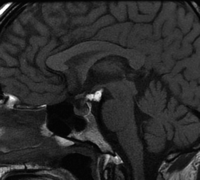The diagnosis and management of parasellar tumours of the pituitary
- Endocrine Unit, Department of Pathophysiology, National University of Athens, Athens, Greece1Department of Academic Radiology, St Bartholomew's Hospital, London, UK2Department of Endocrinology, Theagenion Hospital, Thessaloniki, Greece3Department of Endocrinology, St Bartholomew's Hospital, London EC1A 7BE, UK
- (Correspondence should be addressed to A B Grossman; Email: a.b.grossman{at}qmul.ac.uk)
- © 2008 Society for Endocrinology














